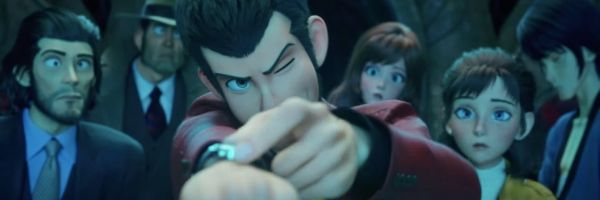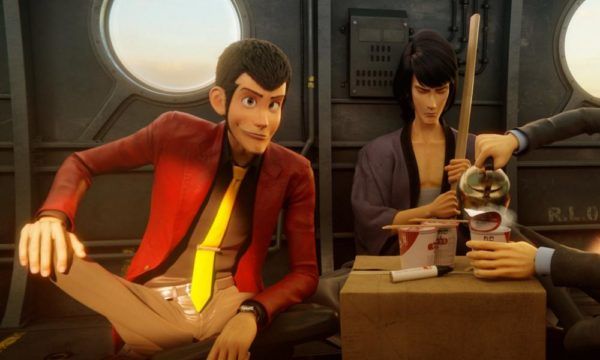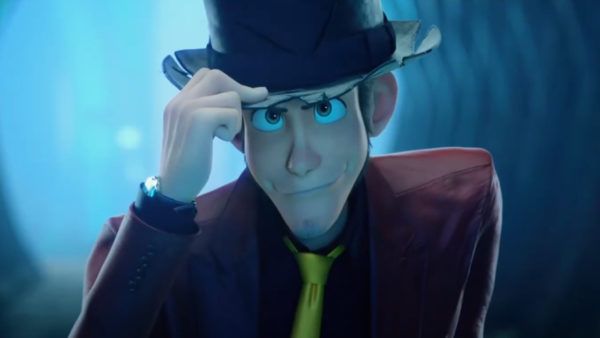Chances are, if you are a casual anime fan, you still probably know Lupin III. The character initially appeared in the late 1960s in a series of comic books by Kazuhiko Katō, who created Lupin under the penname Monkey Punch, and then in an extremely popular anime series that began in 1971 and was largely overseen by future Studio Ghibli founders Hayao Miyazaki and Isao Takahata. The character, a swarthy gentleman thief who gets into comically oversized adventures, has since been adapted into countless animated films (including 1979’s hugely influential The Castle of Cagliostro, which served as Miyazaki’s debut feature), live-action films, animated series, and videogames. (There is, also, tons of merchandise.) The franchise’s aesthetic – a kind of globe-trotting, throw-back-y adventure, is equal parts The Adventures of Tinin and DuckTales, as the character finds himself in increasingly dangerous, highwire situations but always manages to pull himself out. One thing that he’s never done, though, is make the leap to 3D computer animation, which he finally does thanks to the wonderful, whiz-bang Lupin III: The First (in theaters October 18 and 21st and on digital this December).
Lupin III: The First is structured as a fairly straightforward, find-the-doodad mystery – taking place in the 1960s, Lupin (Kanichi Kurita) is attempting to steal a book that contains the key to some kind of limitless, potentially lethal power. But, of course, he isn’t the only one. Fellow criminal Fujiko Mine (Miyuki Sawashiro) is after the book, as is Laetitia (Suzu Hirose), an archeology student attempting to gain the book for her secretive, perhaps sinister adoptive grandfather. Hot on Lupin’s tail, as always, is Inspector Koichi Zenigata (Kōichi Yamadera), who Lupin dismissively refers to as “Pops.” There’s a whole lot of crisscrossing the globe and puzzle solving and inventively staged action sequences; the period setting adds a lovely amount of texture, and while the world might be at stake (the book leads to an otherworldly device called The Eclipse), it’s all fairly breezy and low impact.
And if you’ve never seen an anime before or don’t even know who the character is, don’t worry. You don’t need to. The characters are cleanly drawn, both artistically and in terms of who they are. Lupin’s confederate with the samurai sword? He’s silent and virtuous and when he unleashes that sword, things are going to go down. The storyline, too, is straightforward and easy to follow. There are twists, for sure, but it doesn’t get overly complicated or tripped up by its own mythology or internal logic (as many long running, increasingly labyrinthine anime projects oftentimes do). You know where everybody is headed, what they’re after, and who the bad guy is (spoiler alert: there are Nazis, which makes everything even more well-defined). Lupin III: The First could be your first or hundredth outing with the character; its ruthlessly efficient entertainment will not disappoint.
But Lupin III: The First’s the real breakthrough is in how it looks. This is truly the first time that a computer-animated feature captures the look and, more importantly, the feeling of anime in a truly authentic way. In the past, it feels like anime studios (like Studio Ghibli) when bringing to life CGI creations, has leaned on a cel-shaded aesthetic, which is undeniably beautiful but also distancing emotionally. It looks like hand-drawn grafted on top of computer animation, and oftentimes ends up feeling like a video game instead of something more cinematic. Lupin III: The First takes a different approach. The characters are fully rendered, as they would be in a DreamWorks Animation or Pixar film, but everything about them screams anime. It’s hard to describe, but when you see it, you cannot take your eyes off of it. It’s not that they’re taking things from anime 1:1; that would look unconvincing and feel forced. It’s just about maintaining the vibe of anime. Action and physics work as they would in the real world, but there’s something extra too, a jazzy looseness to the action and visual effects that is so imaginative and over-the-top and always emotionally gripping. (There was a scene that was shared on Twitter this summer of Lupin deftly maneuvering a field of deadly lasers that is evocative of just how eye-popping the entire movie is.) Animation studios TMS Entertainment Co., Ltd. and Marza Animation Planet Inc. have totally outdone themselves, committing to the adaptation in a way that is truly inspiring. They were never slavishly duplicating, which was undoubtedly an option given how much animated Lupin content has been produced in the last few decades, instead choosing to reinvent. They’ve maintained the look and feel and updated it for modern audiences in a truly breathtaking way.
All of which is to say that you have never seen an animated feature like Lupin III: The First. It’s a movie unburdened by subtext or a deeper inclination other than pure delight, and it succeeds on these modest goals. Sure, it’s flashy and stylish, but it’s not just flashy and stylish. It’s deeply entertaining and does something genuinely new in the animation space – it brings the stylization and coolness of an anime film to the relatively rigid world of computer animation. The results are absolutely dazzling. And if you can’t make it to the theater to see Lupin III: The First in its limited engagement (honestly who can blame you?) be sure to catch it when it hits home video. This is undeniably one of the more electrifying animation releases this year.
Grade: A



